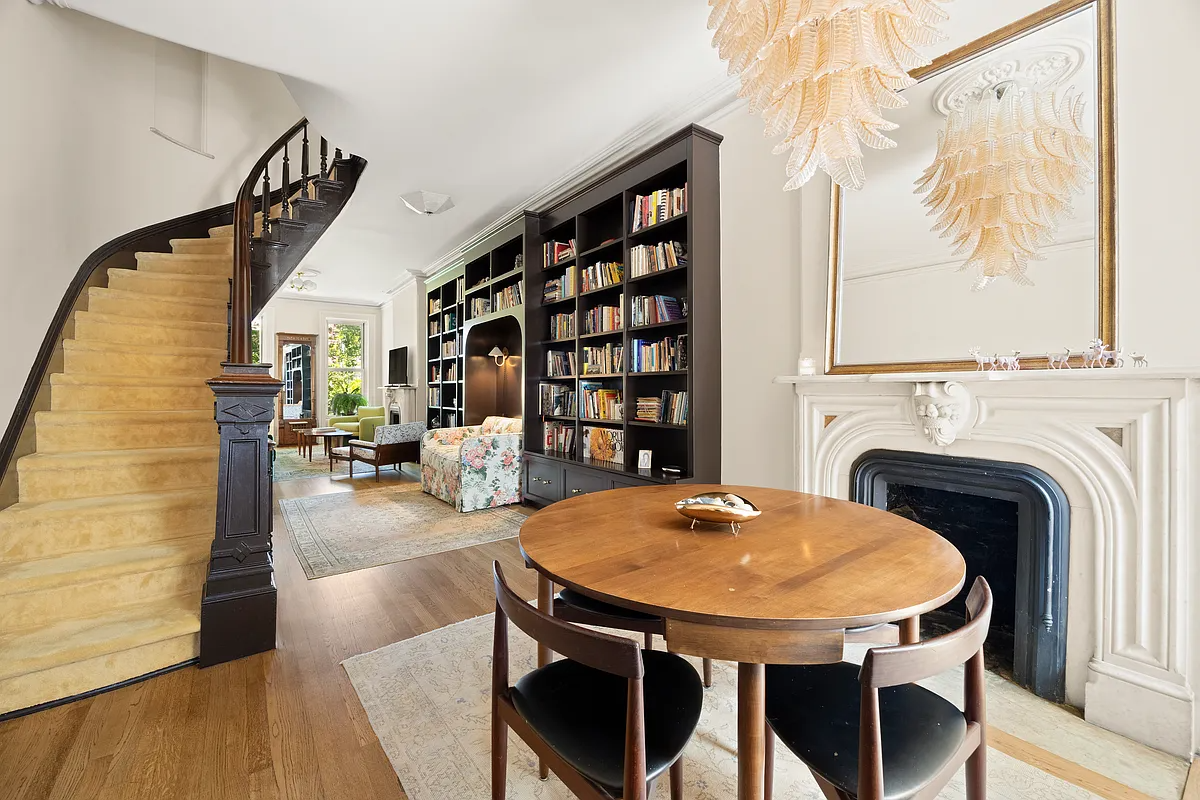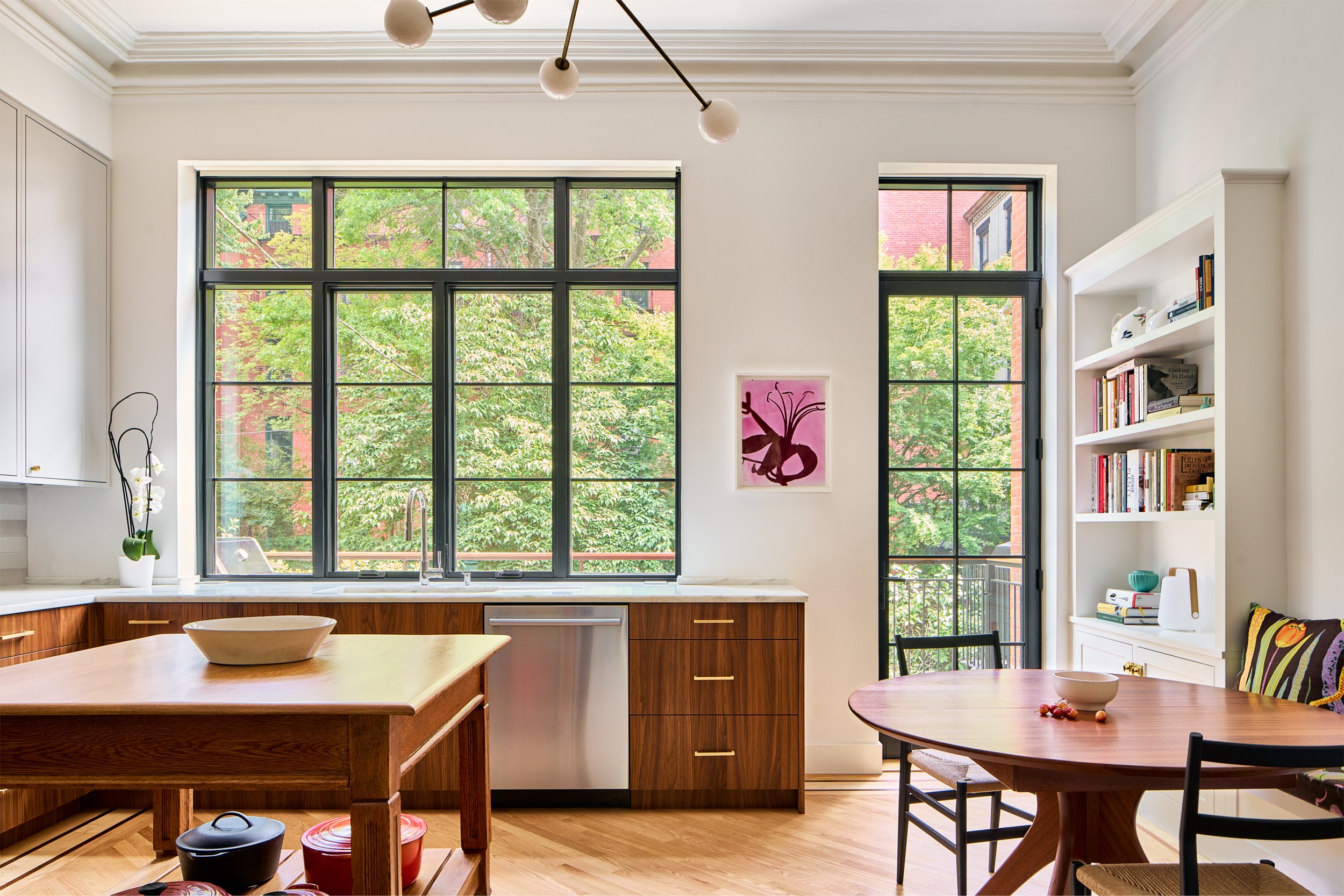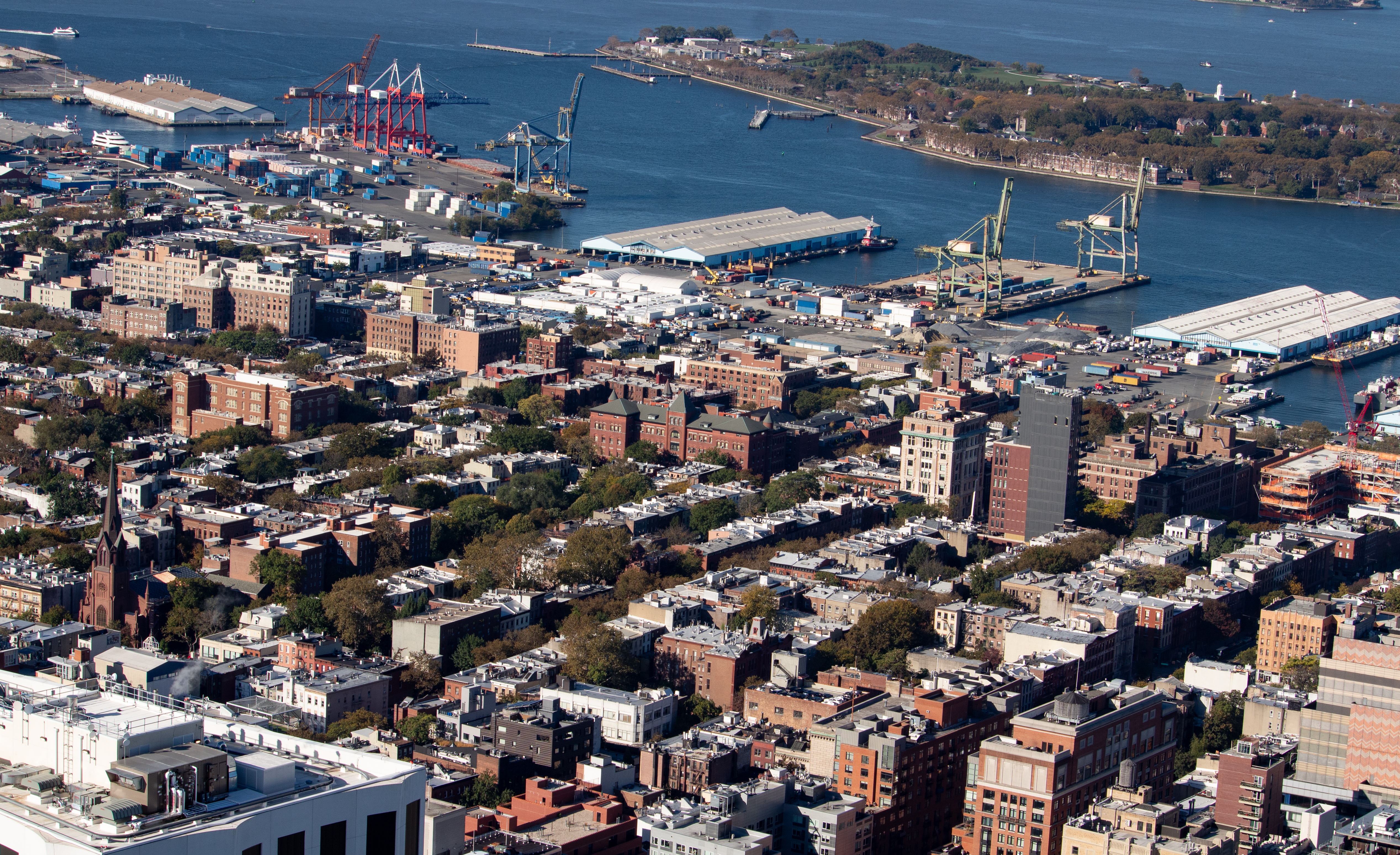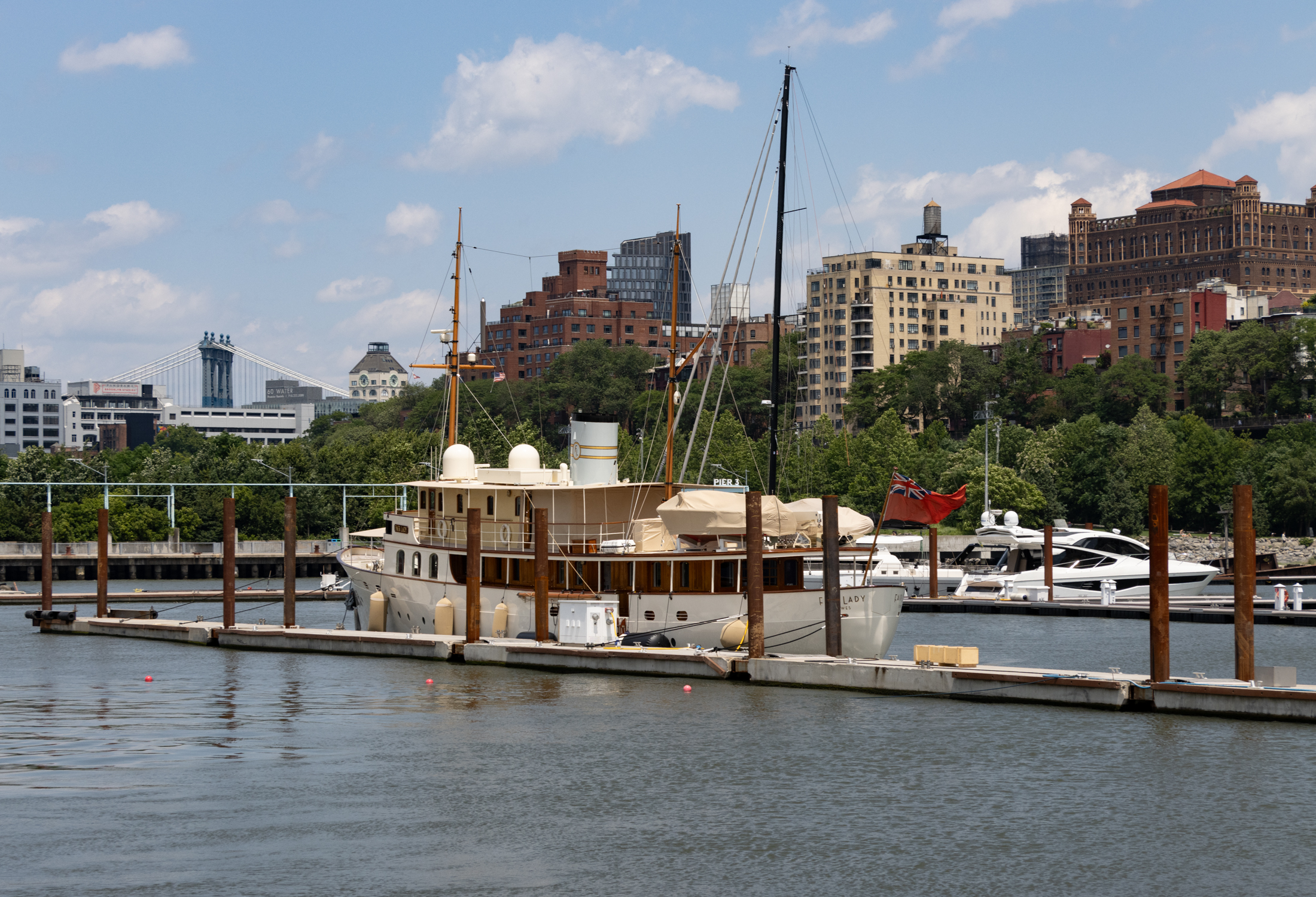Past and Present: Brooklyn Bridge Approach
A Look at Brooklyn, then and now. Public transportation across the Brooklyn Bridge was one of the major reasons for the bridge’s existence. The bridge opened to pedestrian and vehicular traffic in 1883. The first trolley service rolled along the tracks from the Sand Street Terminal in 1898. The tracks ran on the outermost sides…


A Look at Brooklyn, then and now.
Public transportation across the Brooklyn Bridge was one of the major reasons for the bridge’s existence. The bridge opened to pedestrian and vehicular traffic in 1883. The first trolley service rolled along the tracks from the Sand Street Terminal in 1898. The tracks ran on the outermost sides of the bridge, on the same roadway as the horse-drawn vehicles. Above, the elevated railroad lines ran across the bridge to Park Row, in Manhattan, operated by the Brooklyn Elevated Railroad Company. They began in 1883, the year the bridge opened, and were cable cars. The system was electrified in 1896, but the cable method was often used to cross the bridge itself. The photo on the left was taken in 1903, and what strikes me more than the sight of all those tracks, is the multitude of advertising bombarding the public. (I highly recommend going to the Shorpy site and viewing the photo full sized. You can pick out workers on scaffolds, and read every single ad with amazing clarity and detail). Now, as seen on the right, we only have the pedestrian lanes and the lanes for the thousands of cars and vehicles that cross every day. Thank goodness those ads are gone. The past was not always better.

(Photo: Shorpy.com)

(Photo: Google Maps)





LC Arnett — What do you think creating transportation alternatives is all about?! It’s making *better* use of the limited resources.
Getting public transportation to be as efficient and attractive as possible — and the corollary, make single-occupancy automobile traffic as unattractive as possible — so the things that NEED the roads can use the roads!!
Why do we ALL pay for the roads? (i.e., Why is it not just the car owners, regardless of what they think their licensing and registration fees pay for?) It’s exactly what you said — the roads are there to provide goods and services for the whole city. Providing a place for personal cars to drive should be seen as secondary and a luxury!!
arnett, you are being short-sighted. all those goods could be transported by bicycle and it would make Americans more fit too.
Truck traffic is necessary to life in Brooklyn. In case folks forget Brooklyn is part of an island, and one that has little to no water shipping or freight rail. The majority of all good sent to this region come in through the Port by boat and then must be trucked into the city. Even goods that come in as air cargo to JFK & LaGuardia must be trucked to their final destinations.
I attended a Crain’s breakfast where the head of the Port Authority gave a presentation and he noted that one in four trucks crossing the Hudson is carrying food into the city for further distribution. Another 10% are carrying clothing and furniture. Only 20% of the trucks in either direction are empty. And many more goods are carried in panel vans and smaller vehicles.
The reality is making a more “livable” city isn’t really what most people want. A “livable” city has multiple ways to move goods, not just one. A “liveable” city encourages the creation of parks and recreation areas in addition to not at the expense of, manufacturing and industry. A “livable” city tries to spread services both positive and negative across a variety of neighborhoods instead of overburdening low income or less valuable neighborhoods with all of the bad uses.
Thinking about our bridges as people moving entities only instead of recognizing their importance in commerce and industry will indeed cause New York to fall behind other first cities. We should be planning for moving more goods as fewer are produced locally, not developing ways to stop commerce. I’m all for mass transit and sustainability, but my dinner is not getting to the grocery store on a bike.
I think it was most succinct and more than adequate.
Minard — your comment just now was hardly succinct. It was shorter than other comments, but not succinct. The word succinct implies short, clear *and* adequate.
Listen, I’m all for ideological diatribes, but try to make them succinct. They work better that way. I think NY is so huge and so complex we need everything we can get. subways, buses, cabs, cars, monorails etc etc. It isn’t about cutting down on one thing in order to enhance another because everything is already running at the max.
AS for congestion pricing, it is a regressive tax that hits the poor. What do Wall Street bankers care? I’m sure they are all for it -fewer riff-raff on the roads. This works best in societies with rigid class lines (like England. Singapore) it will not work here. Even Sun King Bloomie I has not been able to ram it through.
I agree with tybur6’s suggestions from 11:51, except for the order of the steps. I’d go Step #3 (especially the “little pod things”), and then Step #1. Once those steps are in place, and have achieved real change, then proceed with Step #2 and Step #4.
ps tyburg and brokelin — obviously, i agree completely and your arguments are well stated.
i live near sunset park. there is nothing sadder than looking out at new york harbor and seeing that swathe of brown along the horizon. yes, things are improved, but why should we stop trying to do better.
especially when current energy policies are leading to things like today’s new york times aricle about the effect on food prices of biofuel conversion. Thai cassava used to be a food crop. now it’s all exported to china for conversion to energy and the price of cassava in thailand has has doubled in the last four years.
Regarding working people using their cars — I would ask yourself how many working people use their cars to travel within the “outer” boroughs and not into the central business district. Congestion pricing would improve their experience by removing divertable car traffic that is going into Manhattan.
Throughout this discussion about class, let’s keep a few important facts in mind:
35% — Thirty-five percent — of car traffic into Manhattan consists of single occupancy vehicles driven by government workers who have FREE parking AND a time-competitive mass transit option.
With improved mass transit, maybe we could make that option time-SUPERIOR to driving.
The conventional wisdom that the rich drive and the poor do not is absolutely true, if you look at car ownership rates. 80% of residents of New York City do not own cars. 55% of Brooklyn residents do not own cars. I would be astonished to learn that those are the richer half of Brooklyn.
Granted, the 65% of people who DO own cars in Brooklyn include our remnant middle and lower middle class folks, some of whom will be inconvenienced or made to pay more if they continue to drive into Manhattan during weekday hours. But if done correctly, as a way to fund an INCREASE in mass transit options/speed/frequency/convenience/quality, some will also see a real improvement in their transit experience. And people living along the automobile clogged routes into the City will have an improved quality of life.
Minard, you are just dealing in stereotypes and narrow thinking. Do you think of Singapore as a hustling, commercial place? They invented congestion
pricing, started using it in 1975, to good effect. Sao Paulo?? Brazil is working intensively with bus rapid transit — ie, taking street space away from single occupancy cars and giving it to more efficient transpot modes.
It is exactly because cities are the dynamos of wealth production that we need to become more efficient in our use of urban space; it’s valuable real estate and its being given away to cars at cut-rate prices.